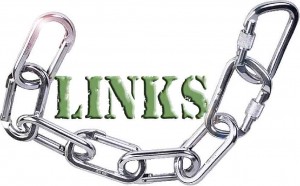The importance of internal linking
Monday, February 28th, 2011
One of the elements of site development and SEO that often gets overlooked is internal linking. When done right, you can kill two birds with one stone, and improve both search rankings and usability. You may be familiar with the fact that when sites link to other sites, search engines pass value for the terms/phrases used in the link anchor text. (Anchor text is the highlighted text in the link.)
When working on improving rankings for a site, people usually try to target links from other sites (external links) that have the desired anchor text related to terms they want to rank for. However, contextual internal links can also be effective in helping to improve a site’s rankings for targeted keyphrases.
Your website’s text content is filled with opportunities to potentially pass link juice to other pages of your site and to help users find their end destination.
To start improving your internal linking strategy, go through your site section by section, page by page, and see where it would make sense (from a user’s point of view), and insert some contextual links to other pages that you want to rank better.
Be sure to use the keywords/phrases (in the anchor text) that you would like the destination pages to rank for. In your links to these pages throughout the site, vary it up and don’t use the exact same phrases in anchor text, or it will look artificial to both search engines and users.



